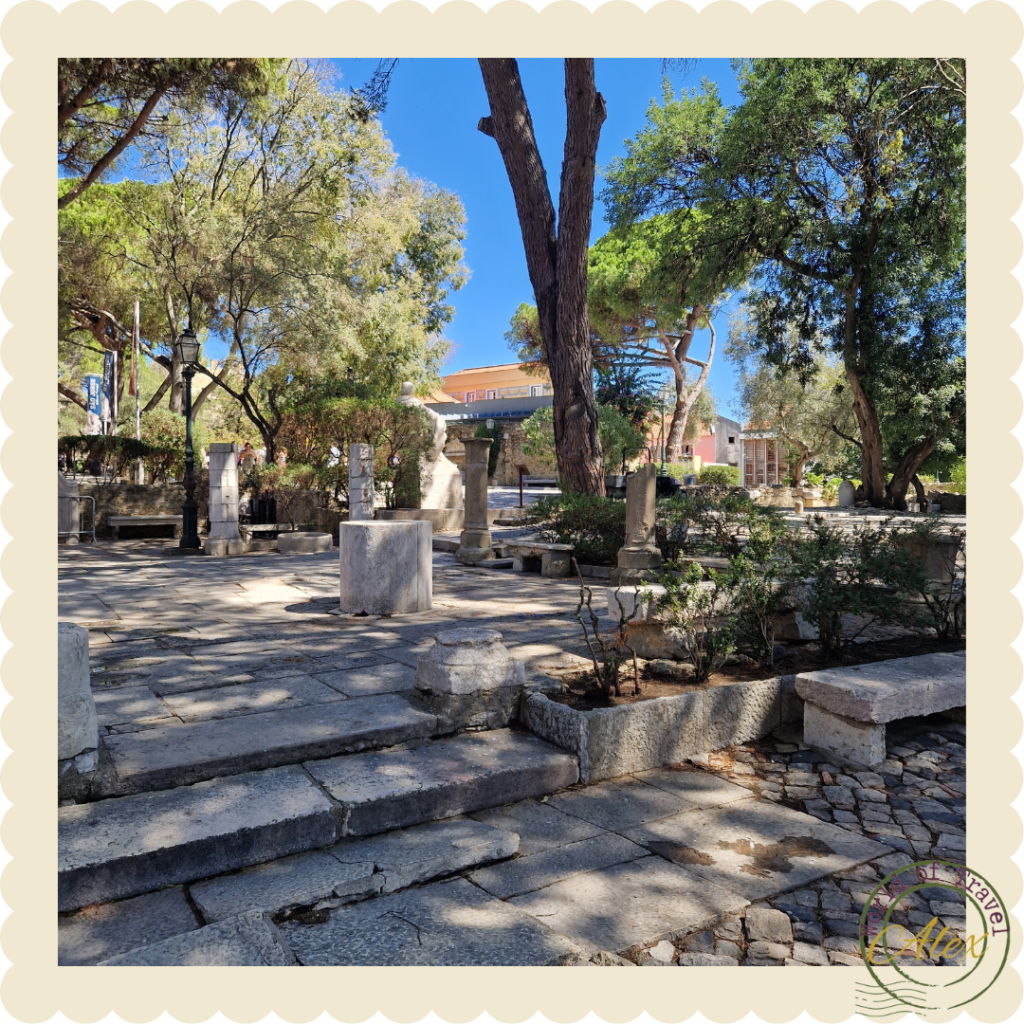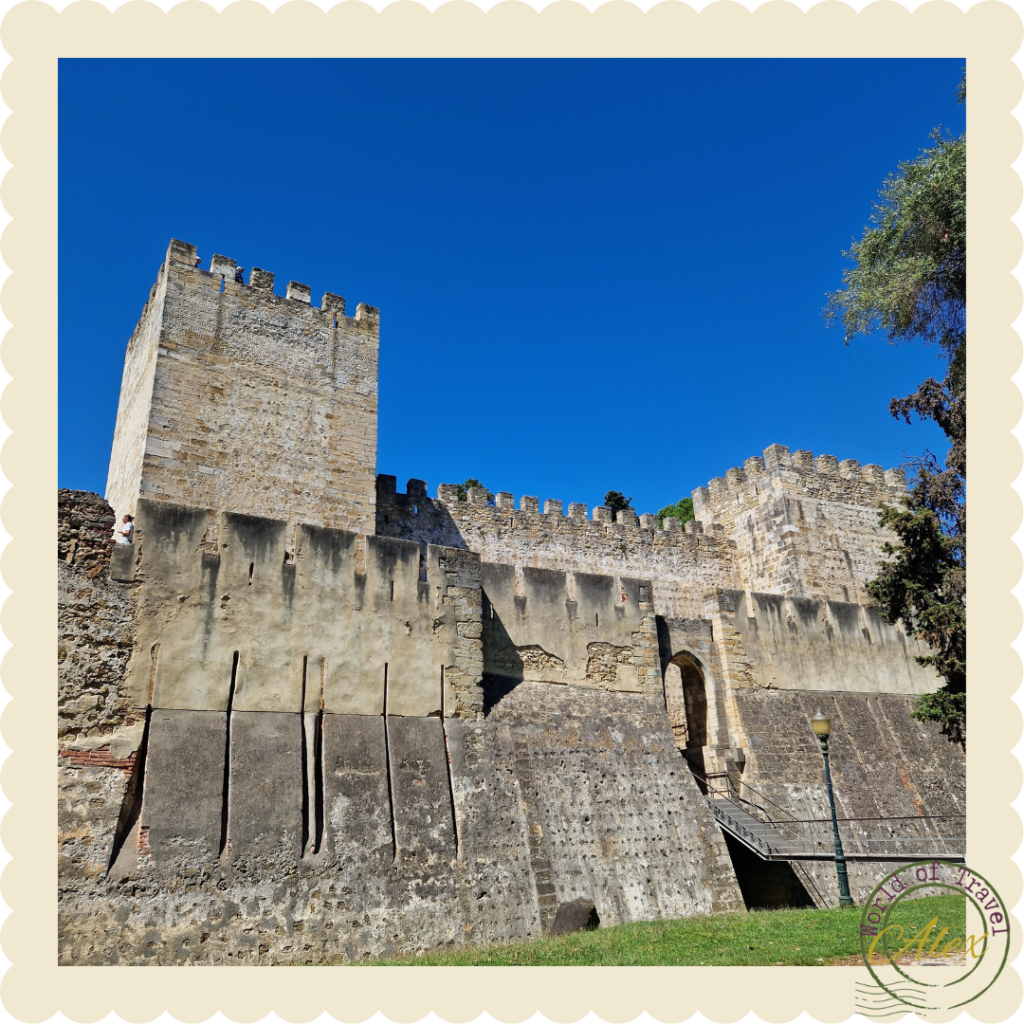Visit Castelo de São Jorge in Lisbon
For your next visit to Lisbon, Castelo de São Jorge should be on your list of places to visit.

Plan your visit
Castelo de São Jorge offers the most stunning viewpoint over all of Lisbon. This fantastic place is located on the vantage point high above the city and the river Tagus.
To get here you will have a steep walk uphill thru the Alfama district. If you need to, you can both take the bus, that will take you almost all the way or the tram. It is recommended to buy your tickets online, as there can be a long queue to the ticket office. If you find that there is a queue when you arrive, you will walk past it on the left and you will find the gates where you will show your online tickets.
Castelo de São Jorge
The Castelo de São Jorge, situated atop a hill and is part of a historic defensive system that has developed over the years. Little is known about the Iron Age and Roman period settlements despite archaeological evidence.
During Islamic occupation 8th to 13th century, the city’s defense included walls along the south side of the hill, forming the medina and enclosing the citadel (kasbah).
The medieval castle we see today was built after the reconquest of Lisbon year 1147, with its current appearance attributed to changes during the reigns of King Afonso III and/or King Denis (13th to early 14th century).
The castle features a walled quadrangular perimeter with towers, wall-walks, a keep, a barbican, and albarrana towers. Modifications in 1373, known as the Fernandine Wall, expanded the city’s defense. The castle has gateways, including the Torre de Ulisses, protected by a large tower.
The main gateway has an elbow-shaped layout for defense. Wooden gates were added in 1940. The castle has a quadrangular layout with turrets, and a tower in the middle fortifies the circulation gateway. The Torre Albarrã, possibly the keep, served various functions and is a popular attraction, with a periscope providing a 360º view of the city.
The barbican, likely built in the 13th century, is of Almohad origin and serves as an obstacle to invaders, positioned next to main gateways.

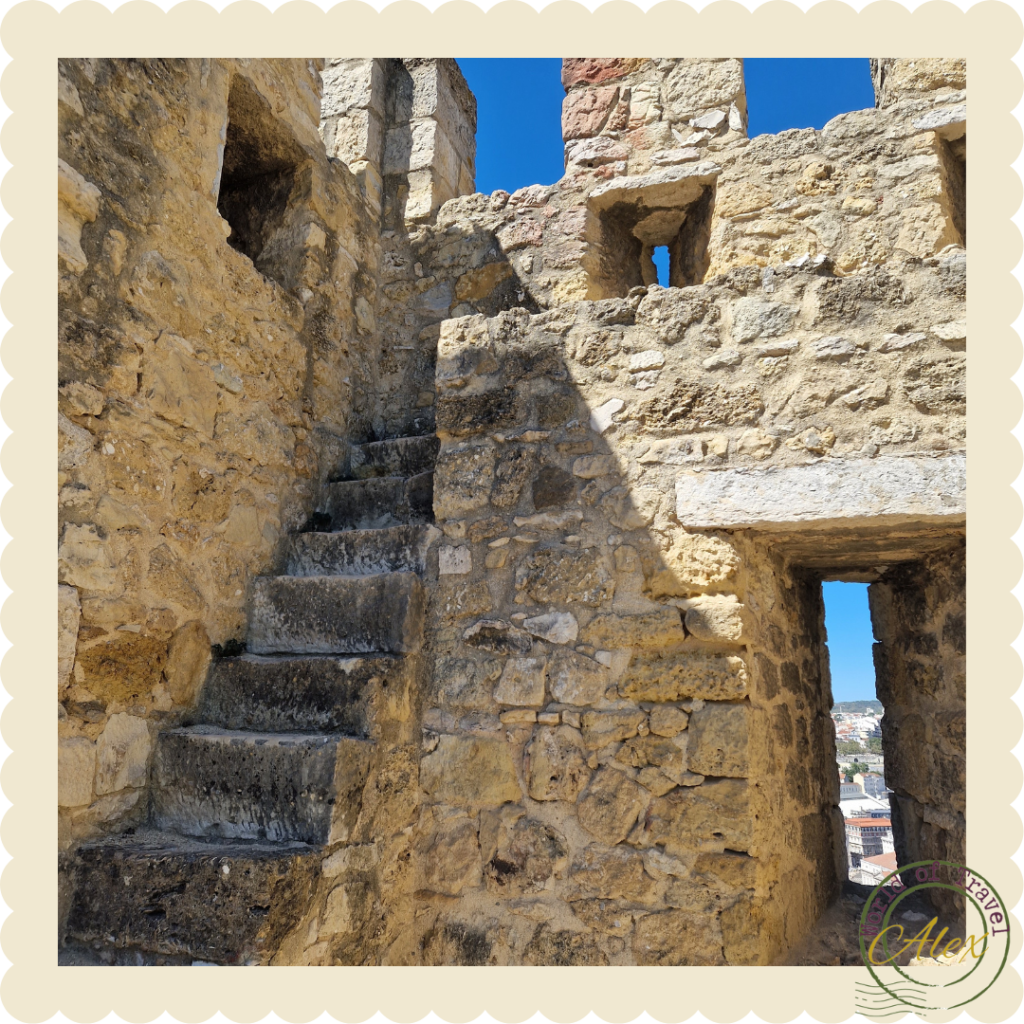
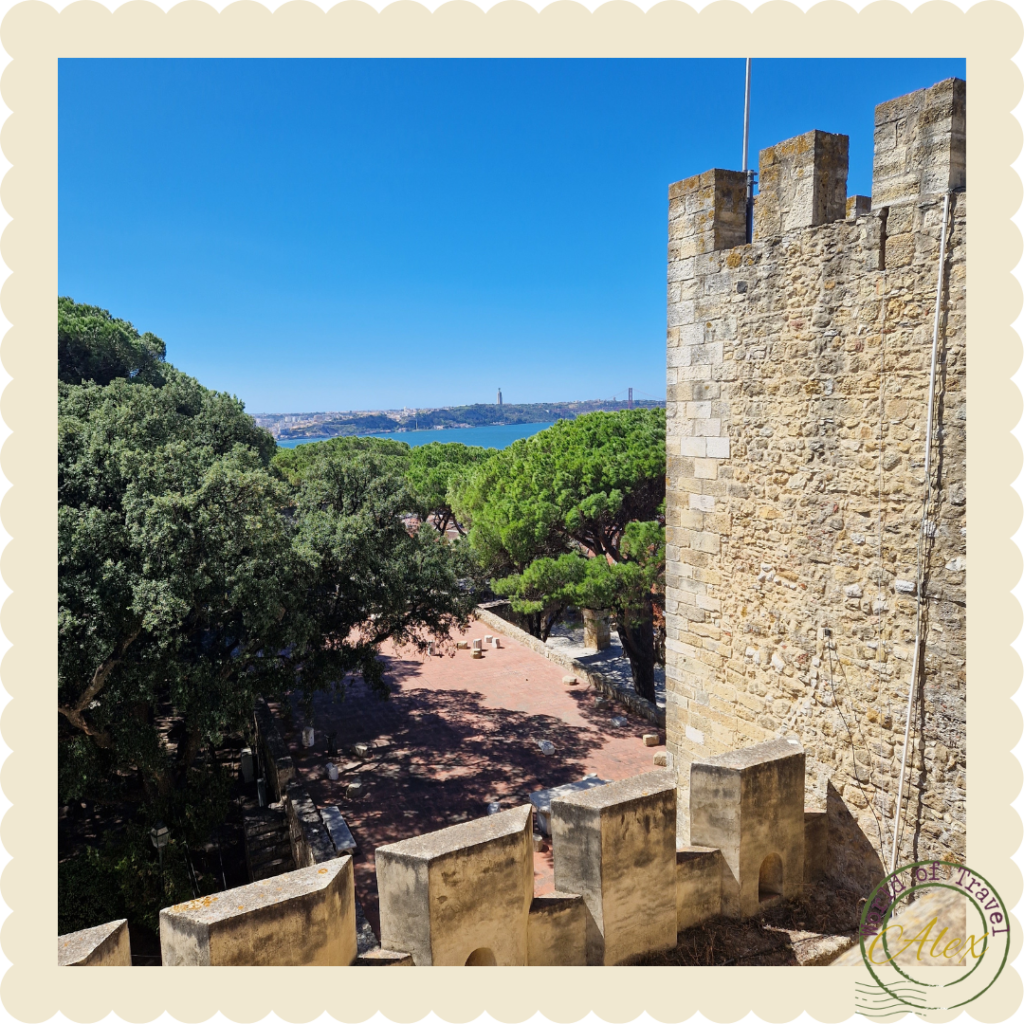
Early Archeaological finds
The earliest evidence of a settlement at the castle dates back to the 7th century BC, during the Iron Age. The decision to establish a fortified village on the hill’s top and its southern and southwestern slopes was based on the natural defensive features of the terrain, with steep slopes to the north, east, and west, water sources, and a strategic vantage point for monitoring the Tagus inlet.
During this time, Lisbon had regular contact with Phoenician populations near the Strait of Gibraltar, leading to the introduction of new technologies and ideas, such as the potter’s wheel, rotating mill, iron metallurgy, and innovative construction techniques.
The oldest structures in the Castle are from a residential area, potentially a kitchen, with a preserved rectangular room. Archaeological findings include pans, pots, plates, cups, and amphorae, indicating trade with the Phoenicians and acquisition of objects from the Eastern Mediterranean, including Greece, the Near East, and the North African coast, from the 7th to the 3rd century BC.
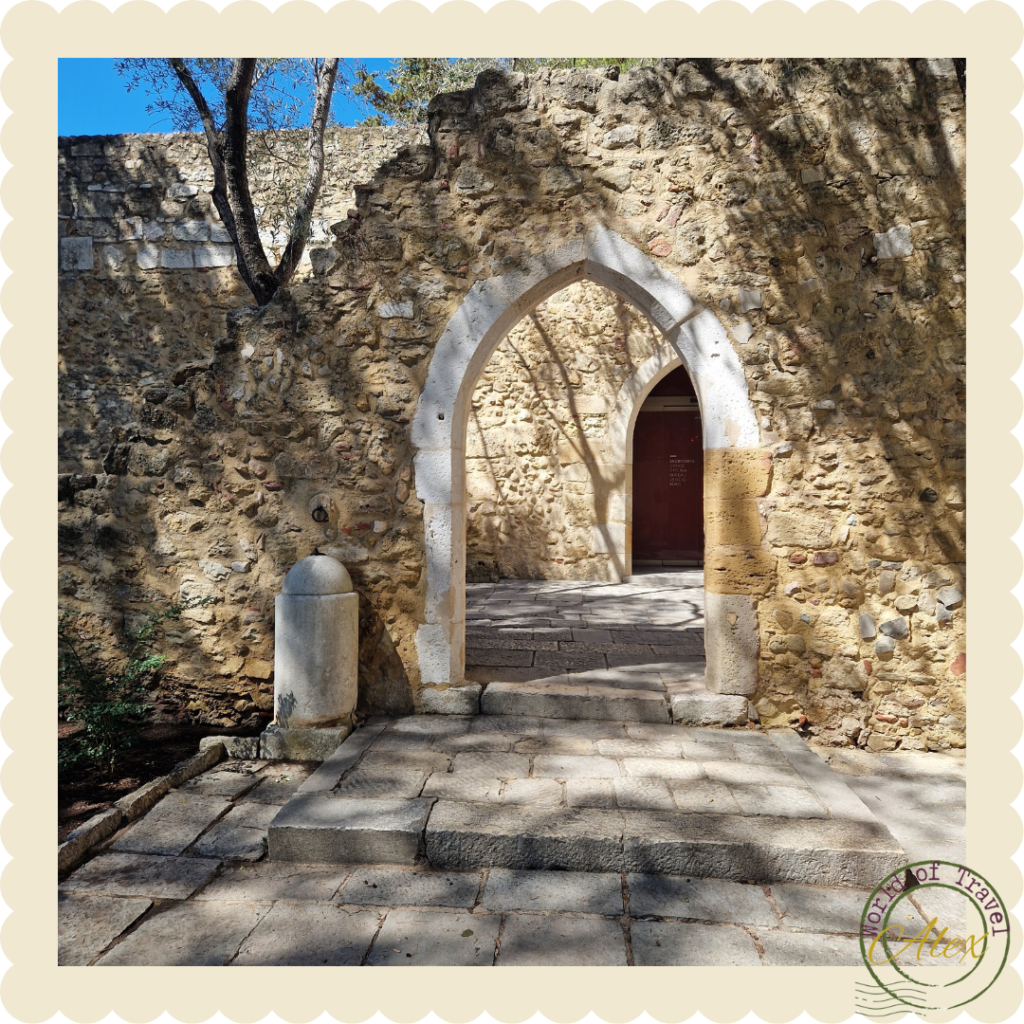


History
The origin and change of the fortress and castle, particularly during the Iron Age, Roman period, and Islamic settlement, pose unanswered questions. The Islamic settlement, likely established in the 8th century, underwent large-scale construction during the Umayyad period, indicating a walled city by the 10th century.
While it’s widely acknowledged that Lisbon had a fortified city with a kasbah, doubts persist about the existence of a castle, as historical records from the twelfth century are silent on the matter. The earliest references to a castle within the kasbah date back to the time of D. Afonso III and his son, D. Dinis.
The current gothic castle features a quadrangular layout, an elbow-shaped gateway, 10 turrets, a barbican in the south-eastern area, and albarrana towers. Extensive modifications occurred during the reigns of various monarchs, including Afonso Henriques, Afonso III, Denis, Ferdinand, John I, Afonso V, Manuel, and Sebastian. Evidence suggests the castle transformed into a residential area starting in the 13th century.
After the union of the crowns in 1580, the castle served multiple roles, such as a military base, prison, and hospital. During a two-year period, the Duke of Alba and the Castilian military garrison were stationed there.
The castle and palace were significantly affected by the 1755 earthquake, leading to subsequent construction of a military base, later demolished in 1939-1940.
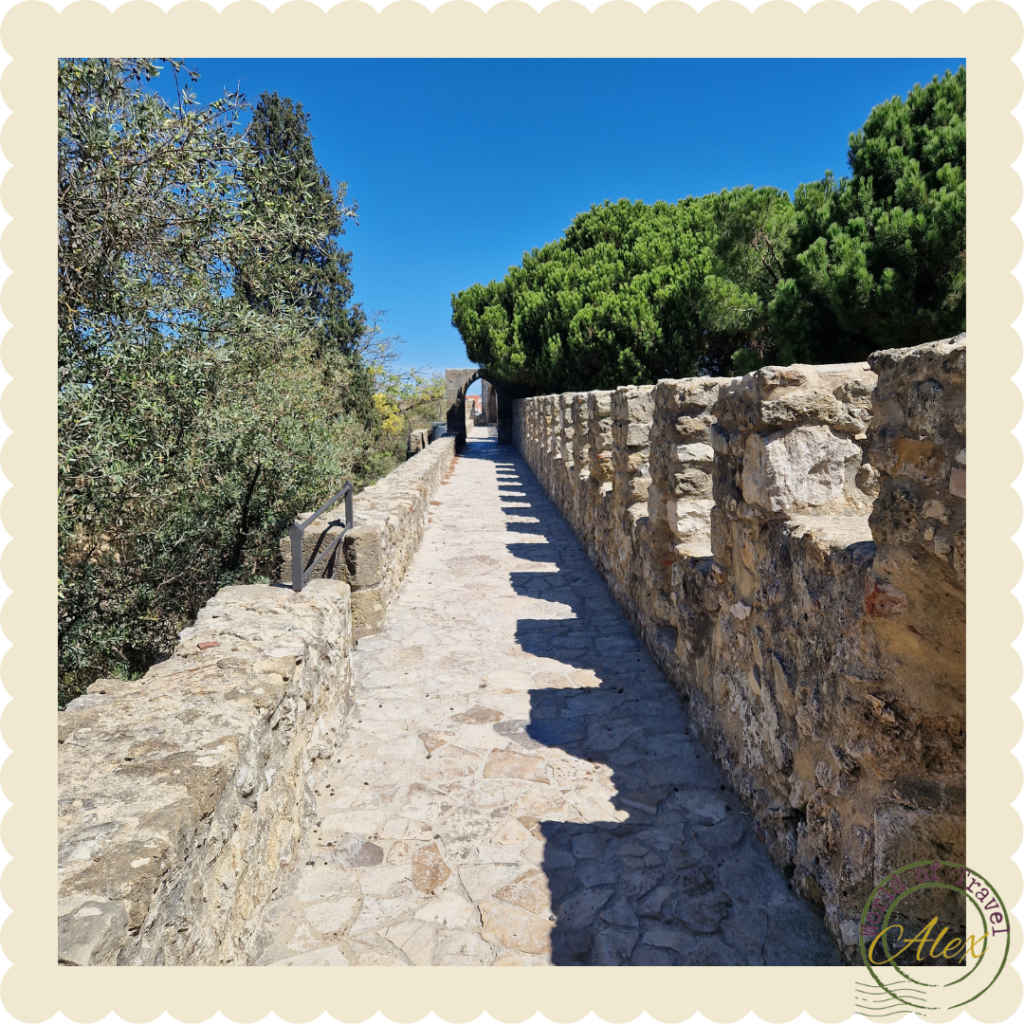


Castle Garden
In the past, the area around Castelo de S. Jorge lacked trees both inside and outside the walls, likely due to military considerations. The castle garden, established in the 1950s by architect Gonçalo Ribeiro Teles, marked the transition from a military fortress to a leisure space. The castle now serves as a habitat for various fauna, including birds and bats. The site promotes educational initiatives to raise awareness and appreciation of the species residing there, offering visits, workshops, and conferences.
The castle is home to diverse bird species like pigeons, blackbirds, turtle doves, sparrows, collared parakeets, and great tits. Notably, the Indian peacock, with its vibrant plumage, is the most abundant species. Originating from India, peacocks have been prized in Europe for centuries and are cared for at the castle, where around 40 individuals are monitored year-round. Scientists conduct regular counts, check-ups, analyses, and deworming, and all chicks born between April and May are microchipped.

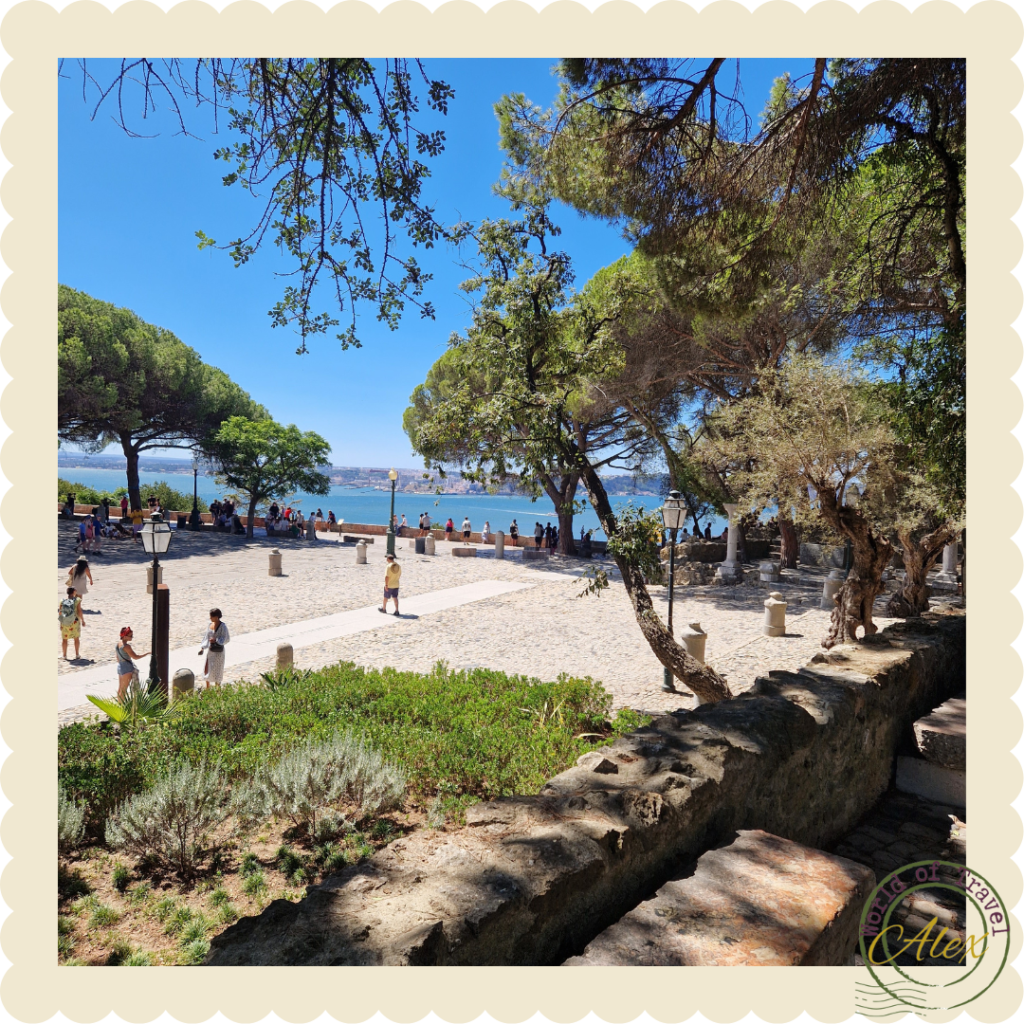
Accessibility and facilities
The Castelo de São Jorge is equipped with accessibility features to accommodate visitors with mobility needs. The ticket office provides an access ramp for wheelchairs and offers priority service. There is an accessible route from the entrance, after the turnstiles, to the eastern viewpoint, featuring a regularized floor.
Castelo de São Jorge is not the easiest to get around if you have mobility restrictions, as there are uneven pathways, and you need to do some climbing in the castle. There is still an opportunity to see the wonderful view of Lisbon at the main square.
Toilets at the castle include baby changing facilities, and one of the toilets is specifically prepared to accommodate visitors with wheelchairs, enhancing the overall accessibility of the site.
There are the options to buy ice cream and coffee inside, but I would recommend to find a restaurant before or after the visit. There is also a small shop in the museum.
Public transport
Tram: Tram 28E to Largo Portas do Sol or Santa Luzia Viewpoint.
Bus: Bus no. 737 to bus stop Chão da Feira, and then walk up Rua de Santa Cruz do Castelo, ca 2 minutes.
Opening times and admission
Summer Time, Mar to Oct:
Every day 9.00am to 9:00p,
Winter Time, Nov to Feb:
Every day 9.00am to 6.00pm
Adult: 15
Young adult, 13-25: 7,5
Senior, 65+: 12,5
Child, 0-12: Free
It’s a good idea to book your tickets online before your visit.
